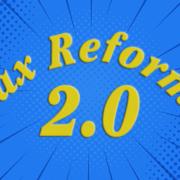Is there a weak link in your supply chain?
In an increasingly global economy, keeping a close eye on your supply chain is imperative. Even if your company operates only locally or nationally, your suppliers could be affected by wider economic conditions and developments. So, make sure you’re regularly assessing where weak links in your supply chain may lie.
3 common risks
Every business faces a variety of risks. Three of the most common are:
1. Legal risks. Are any of your suppliers involved in legal conflicts that could adversely affect their ability to earn revenue or continue serving you?
2. Political risks. Are any suppliers located in a politically unstable region — even nationally? Could the outcome of a municipal, state or federal election adversely affect your industry’s supply chain?
3. Transportation risks. How reliant are your suppliers on a particular type of transportation? For example, what’s their backup plan if winter weather shuts down air routes for a few days? Or could wildfires or mudslides block trucking routes?
Potential fallout
The potential fallout from an unstable supply chain can be devastating. Obviously, first and foremost, you may be unable to timely procure the supplies you need to operate profitably.
Beyond that, high-risk supply chains can also affect your ability to obtain financing. Lenders may view risks as too high to justify your current debt or a new loan request. You could face higher interest rates or more stringent penalties to compensate for it.
Strategies to consider
Just as businesses face many supply chain risks, they can also avail themselves of a variety of coping strategies. For example, you might divide purchases equally among three suppliers — instead of just one — to diversify your supplier base. You might spread out suppliers geographically to mitigate the threat of a regional disaster.
Also consider strengthening protections against unforeseen events by adding to inventory buffers to hedge against short-term shortages. Take a hard look at your supplier contracts as well. You may be able to negotiate long-term deals to include upfront payment terms, exclusivity clauses and access to computerized just-in-time inventory systems to more accurately forecast demand and more closely integrate your operations with supply-chain partners.
Lasting success
You can have a very successful business, but if you can’t keep delivering your products and services to customers consistently, you’ll likely find success fleeting. A solid supply chain fortified against risk is a must. We can provide further information and other ideas.
© 2018












